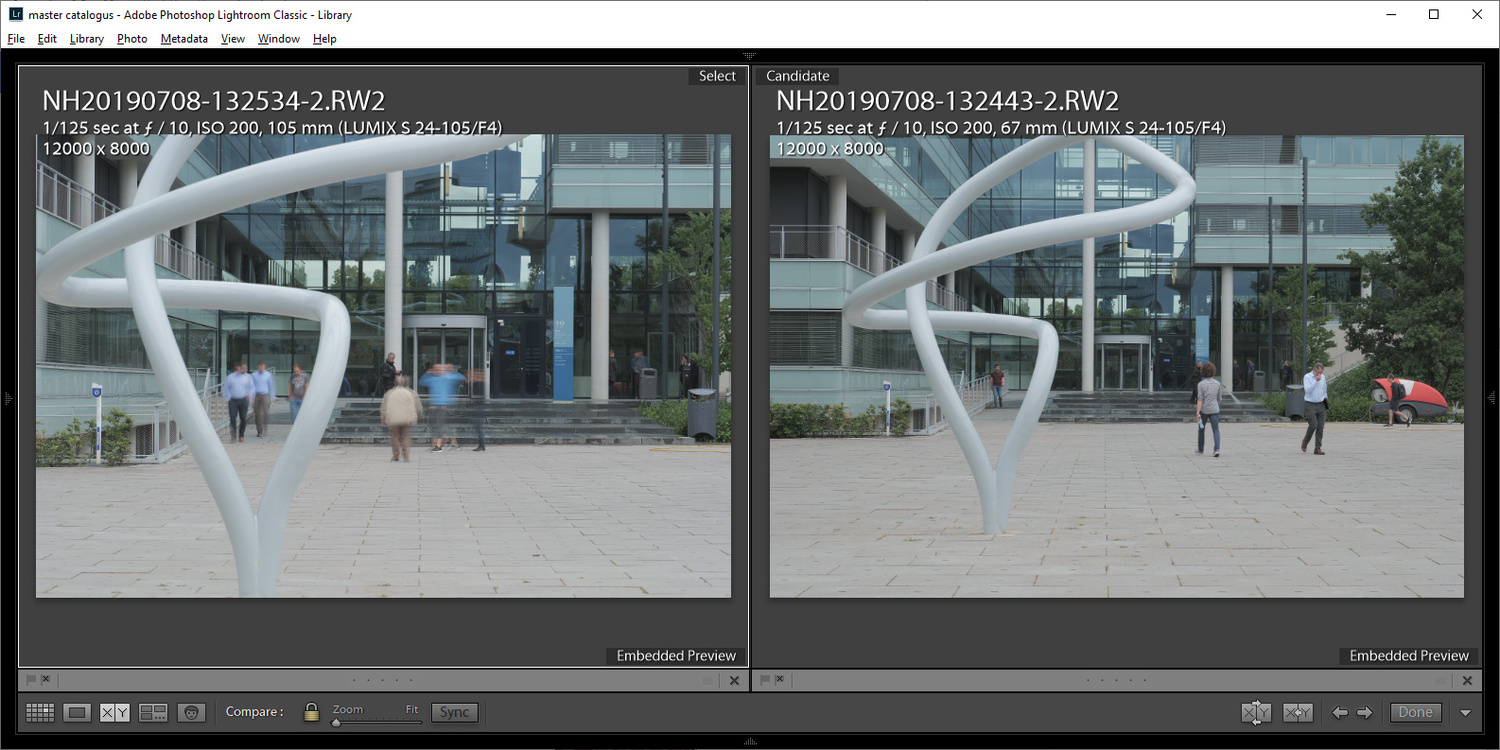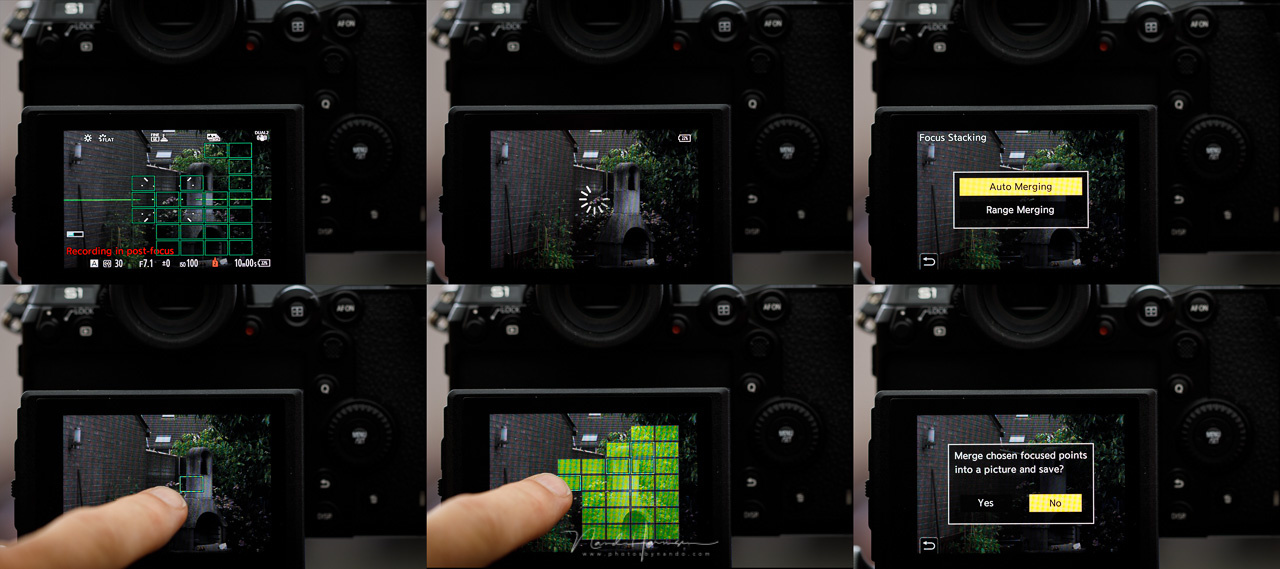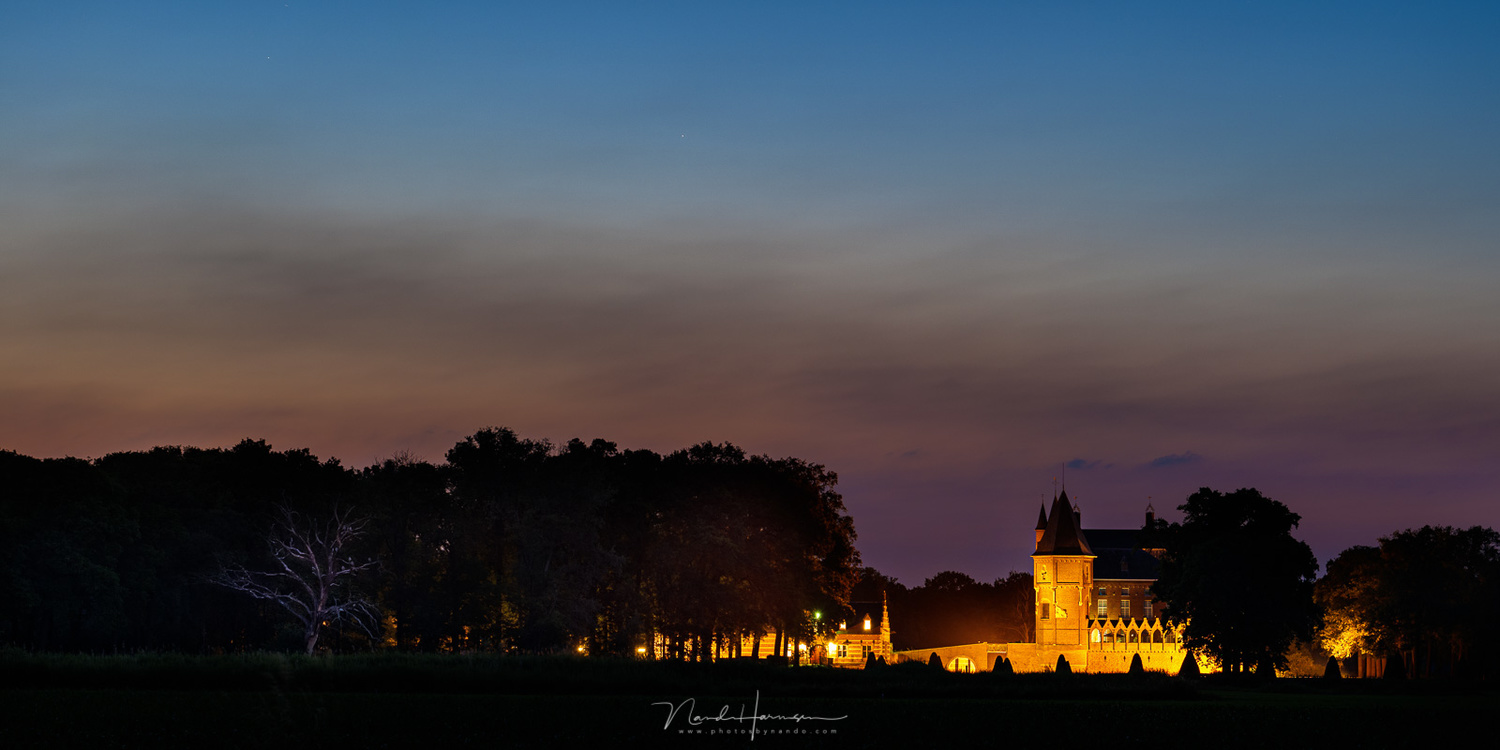Forget about Sony, Canon, Nikon, or any other mirrorless camera. Panasonic has the Lumix S1 and Lumix S1R, and those cameras are amazing. I have invested a lot in Canon, and I am really happy about the system. But if I had to do it all over again today, I definitely would choose the Lumix S1.
I have the opportunity to review a lot of different cameras. I learned a lot while photographing with Canon, Nikon, Sony, Fujifilm, Hasselblad, and Leica. I know Canon doesn’t have the latest technology, but the cameras have a real good design and layout. I hate the Sony cameras for their design and ergonomics, although today they have a good AF system and produce clean images. I seem to have a love-hate relation with the Fujifilm, with a few amazing cameras with old fashion dials, but also with some irritating downsides. I don’t know about Nikon, because they feel like a Canon from another brand (sounds silly, doesn't it?).
I do love the Hasselblad X1D 50c, even when it is not fast enough for my sort of work, just like the amazing Fujifilm GFX 50s with its terrible ergonomics. The Leica SL seems one of the nicest cameras so far, although it is not perfect. Up to now Panasonic had nothing but the small micro 4/3 sensor cameras, that are real nice machines, but lack the larger full frame sensor. Most importantly, every single one of the aforementioned cameras are very capable, amazing machines, and they get the job done. But now there is the full frame Panasonic Lumix S1 and I must admit, it is close to being perfect.

The Panasonic Lumix DC-S1 with a nice 24-105mm f/4 and a 70-200mm f/4. I used it for a couple of months and came to love the system.
The Camera and Its Use
The Panasonic Lumix S1 is one of the two new full frame cameras from Panasonic. I got a chance to shoot a few months with this camera, and although I had my reservations, I got really excited about it. It is just like the Leica SL, big and heavy. In other words, with a perfect balance when using those large full frame lenses. It even has the same Leica L-mount.
The size of the Lumix S1 makes the camera stand out from all those small mirrorless cameras from other brands. Mirrorless is not about making cameras as small as possible, but it is just a different technology. Making a camera smaller may have benefits when taking it on holiday, but for intense use the ergonomics are more important than size, I think. Panasonic seems to agree, and this resulted in a camera body that has a really good design, with buttons on the right places, and easy to be reached without struggling. And if you believe it or not; every single button and wheel on the camera can be customized. Even the behavior of a button can be customized. I think Sony comes close to the same level of customization, but changing settings with the Lumix S1 is easy compared to Sony, thanks to its well-designed menu structure.

An overview of the Lumix S1. Enough buttons and dials to operate the camera in a very convenient way.

Customization seem limitless. Every button and dial can be assigned. Even the behavior is customizable. Oh yes, and you can use the touch screen for the menu if you like.
The Amazing Options
It is a pleasure to use the Lumix S1. I had a beautiful 24-105mm and 70-200mm lens with it. The electronic viewfinder has an amazing 5,76mp resolution and the eye pupil distance can be adjusted, perfect for those wearing glasses. The screen on the back can be tilted in horizontal and vertical direction, and it has a fully functional touchscreen. You can use it for viewing your images, choosing AF punt, operating the menu and all other functions, and you can even swipe to change parts of the screen layout. It makes the camera very user friendly. The camera has face/eye/body AF, and you can also activate animal AF.

The touchscreen is very good. Not only for choosing an AF point, but also for the menu, viewing, and even to place the histogram on any desired location.
The Lumix S1 is equipment with a super resolution function, for making 96mp images instead of the normal 24mp. You even have the option to cancel out movement, which does a great job. There is also the post-focus option, to choose the focus afterwards, or combine different focus points. Although this focus stacking option only produces jpg images, it is a nice feature. With 9 fps the camera is fast enough for most purposes. If you want to go faster, and you don’t mind to shoot in JPG, just activate the 30fps 6K resolution or the 60fps 4K resolution. For long exposure you can dial up to 60 seconds before switching to bulb, which is more than enough in most circumstances.

There is super resolution possible, making a 96 mp photo with the 24 mp sensor. You can set your camera to cancel out movements, just like in this example. It does an amazing job.

Post focus / focus stacking is another option build into the Lumix S1, just like I saw with the Lumis G9 and GX9. Unfortunately the result is only in JPG, so take care of your exposure first.
And of course there is In Body Image Stabilization, that can work in combination with lens stabilization. Panasonic mentions a five to six stop shake reduction with the new V1.1 firmware update
Image Quality
Having all those options may seem wonderful, but these won’t matter if the image quality of the camera sensor is bad. I was surprised to see how well the images looked, and how far I could lift the darkest parts of the image without any significant loss of quality. The best result I got from a full frame camera so far, would be the Sony A7R III, but I think the Lumix S1 produces a tad better quality. This is visible when lifting shadows to extremes, as you can see for yourself in the example below, where I have increased the image up to +5 EV in Lightroom, including the shadows to almost 100%. It is more than needed, but it is just to see how far I could go. At higher ISO levels the image will have a bit more noise, but similar to what I have seen with the Sony A7R III. Of course, lifting shadows 3EV or more at ISO 12,800, would result in unacceptable noise levels, like any other camera would.
I know, looking at the dynamic range in this way is not completely scientifically, but it is what my eyes see, and thus what the client or viewer will see. That is what counts.
The Downsides
You might think, what about the downsides? And yes, the Lumix S1 is far from perfect. The face/eye/body AF is a little bit nervous and changing faces is not as smooth as you might want to. Some dials cannot be locked, so these may change when take the camera out of the bag. And to be honest the camera feels… no, it is heavy. But that all is not that important for me, you can work with it. I did find the exposure simulation in the manual mode very sluggish. If I would have a longer exposure in manual mode, the screens did not respond real time when moving the composition. The funny thing is, when the same exposure time was given in aperture priority mode, the screens responded perfect. Perhaps this is due to some setting, or a bug in the system, but it was very annoying.

Noctilucent Clouds in the night sky. Setting your camera to manual will result in a sluggish liveview. That is one of the biggest downsides of the Lumix S1. A good firmware update could fix this, I think (90mm | ISO800 | f/8 | 4sec)
My Final Verdict
When I got the Lumix S1 out of the box, I thought it would be just another mirrorless camera that had the intention of being a modern camera, but with all the quirks of a first-generation full frame mirrorless, like we have seen with the Canon EOS R and Nikon Z 6 and Z 7. But when I worked my way through the initial settings, I became surprised of all the options I had. Setting up the camera was easy enough, although the most optimum settings can only be found after extensive use. As time passed, I grew to love this piece of machinery, and I loved the results I got.

Me, using the Panasonic Lumix S1. It fits perfect in my hand (and I don't have large hands). I loved using the camera. (Photo by Hetwie (www.hetwie.nl)
I did have some issues with the face/eye/body/animal AF, feeling handed over to a system that had to interpret what I would consider the subject. I guess it is something that is not related to the camera itself. Even so, assigning another face in the frame to the AF system is not that reliable. When having no more that two persons in the frame, it does seem to work quite nicely.

Merijn and Kelly during a loveshoot on a summers eve. The face/eye/body AF worked very well (105mm | ISO100 | f/5,6 | 1/125sec)
I must say, the Panasonic Lumix S1 is an amazing camera that I loved using during these months. I hated to see it go. And perhaps it is not perfect, but then again; no camera is.
Things I Like
- Size and ergonomics
- A lot of buttons and dials
- Face/eye/body and animal AF
- Customizability
- 5 stops IBIS and 6 stops together with lens stabilization
- Well build menu structure
- Two card slots
- High resolution EVF
- Super resolution with option to cancel out movement
- Post-focus and focus stacking build in
- 30 fps and 60 fps in 6K and 4K mode
- Fully functional touch screen
- Amazing dynamic range and image quality
- Exposure time can be set up to 60 seconds
- AF tracking works well
Things I Did Not Like
- Dials that cannot be locked for accidental adjustments
- Two different memory cards
- Battery life is not top of the line
- Sluggish response of the screens in manual mode with long exposures
- Face/eye/body/animal AF is very nervous
- Switching AF between faces is not that reliable
- It is a bit heavy
- Why limit the exposure time to a maximum van 60 seconds?
Ah yes, perhaps you might think I am sponsored by Panasonic, but I am not. But I wish Panasonic did sponsor me with a coupe of Lumix S1 cameras and a bunch of lenses, because if I had to buy a new camera system, it would probably be this system.

A common buzzard, shot in tracking mode. It worked very good, even with a strong backlight. (200mm | ISO100 | f/10 | 1/1600sec)

The dynamic range is very good,making this shot possible without loss in quality. No need for bracketing (48mm | ISO100 | f/5 | 1/1250 sec)
















Hi,
It seems your impression matches many other reviewers...
I just wanted to comment on the sluggish long exposure thing. This is how Pana is doing it: it really gets data from all those seconds and if you move, it will very slowly change what you see because what you see is the addition of those seconds of light.
Not sure how other way it should work without outrageous noise in the preview.
That can be the reason for the sluggish live view. But it is something you cannot work with, unless you have a button to activate this behavior if needed. That would be a good update for this camera.
Would you mind to fix the typo in the title? The name of the camera is not "Lumic"
Yes I know... I made a mistake.
Thanks for mentioning it. Now it is corrected
Title typo
corrected. Thanks for mentioning it
Nice photos bro!
It's a very interesting camera for cinematographers... It remains to be seen if the A7S3 will blow it out of the water with HDR video performance. But I'm not generally a Sony fan, so if the performance is similar I will buy the S1.
Thank you
Sony is up against some hard thermal limits in their current line of camera bodies. Unless they make a large all-metal body much like the S1 (which their fans will hate) then I don't see them matching the S1 on video features. This is probably why the A7R4 was released first.
Some interesting thoughts (y)
I havent had the opportunity to handle one yet, but the price seems...noncompetitive.
Oh, it's competitive when you combine the high-resolution, high-refresh rate EVF with the 4K/30 unlimited recording, 4K/60 recording (nobody else has this yet in full-frame), the multi-shot hires RAW images (Sony is just catching up), the improved firmware 1.2 focus system, and the almost-perfect ergonomics. This camera isn't meant to sway away Sony users. It's meant to appeal to die-hard DSLR users (like me) who hate Sony's poor ergonomics, want an EVF that's actually superior to their optical viewfinders, and want video features that aren't just uselessly tacked on (looking at you Nikon DSLRs). It should also be noted that the lenses released so far are of very high quality. With zero focus breathing, and sharpness across the frame. Making them perfect for shooting video.
I totally agree with you, Keith
Yes. Why the 60 second limit. This is the only thing I prefer my Fuji GFX 50s with. It takes 15 minute exposures and gets the histogram and exposure right. For long exposure fans this definitely one limitation, that I think could be easily fixed with a firmware update.
Having grown up on Olympus, this is the first camera that came close for me to one. In most respects it is better.
I will probably get the Sigma 45mm Lens so that I have a smaller firm factor for long bushwalks, and I do hope Leica or Panasonic bring out some small, weathersealed lenses. The 50 1.4 Panasonic is beautiful.
Yet when combined with the camera makes a rather heavy package.
My conclusion is similar. Though I have a S1r, it’s the one camera that suits me the best for high quality work. I do love it and it’s now the camera I reach for every time.
Anyone want to buy my GFX?
If you need more than 60 seconds, you can choose the GFX with its 15 minute exposure. Or the Hasselblad X1D with its 60 minutes limit. :D
But I don't want your GFX, though
;)
I have a Panasonic G7 that I bought a few years ago when I got back into photography and I love it. I find the ergo’s, button layout and menu system of the Panasonic to be incredibly easy to use and intuitive.
When buying a full frame camera last year I would’ve loved to pick up the S1 but it being $600 more than the a7m3 and really only offering 2 f/4 zooms makes it impossible to choose over the Sony.
Now I’m kinda locked into the Sony architecture; which honestly I have some complaints about but those negatives can be worked around. The lack of lenses can’t.
It is just a matter of time before more lenses will appear. You can also use the Leica lenses. The months I spend with Sony did not convince me, and I kept cursing the Sony architecture. On the other hand, THis S1 convinced me within a few weeks.
But that is personal, of course. :)
The next batch of Panasonic/Sigma lenses are only about a month out. The ramp-up is taking time, but once they get up to speed they'll be releasing new glass faster than Nikon could in double the time.
Is this a real article or a troller’s mean comment at a rumor website somewhere? How come this quality of an article can be published, I find it fascinating.
Too many wrongs with an unserious attitude, followed by overly modified mediocre images.
Shocking.
You can always ignore this article if you don't like it. I won't mind at all
15/18 of Mike’s comments this year are Sony related. The other 3 either bash DSLRs or was a winky face. I doubt you’ll lose sleep at night ignoring this troll
You are right; I slept very good last night ;)
I am on day 3 of evaluating an S1R rental to replace my Canon 5D4. I use the G9 as my street / travel camera and have fallen in love with the quality, controls and customization, and layout. But the G9 can't print bigger than 15x20 without beginning to degrade.
One of today's discoveries with S1R was the solution to the unusably-laggy EVF response in low light. Turn off Constant Preview. That's the difference between your experiences in manual and aperture, most likely. It just can't keep up with updating exposure preview.
Almost everything about the S1R beats the 5D4, which is an industry workhorse that does just about everything really well, but has not become an Object of Desire for me. But the S1R is 2 stops worse on noise: 1600 is the top of usability for a 20x30 or larger print. But it gains 3 stops because of IBIS v.v. lens-only stabilization -- a net plus for static subjects that can tolerate a slower speed.
I experienced a laggy EVF also, when I had the S1 a second time with the new firmware. During a loveshoot the screen became almost unusable at the long end of the zoom. It was during twilight. It was very irritating.